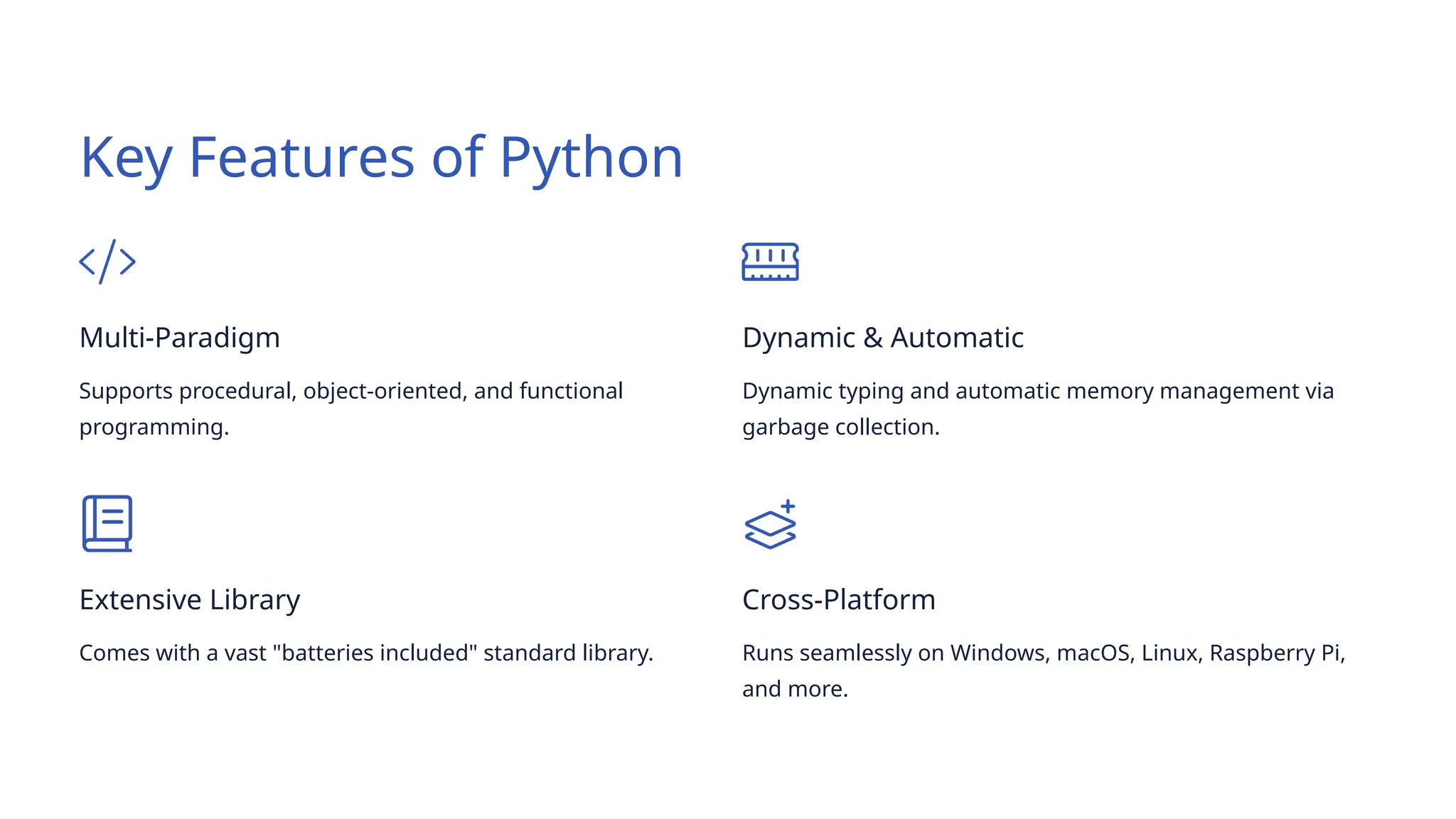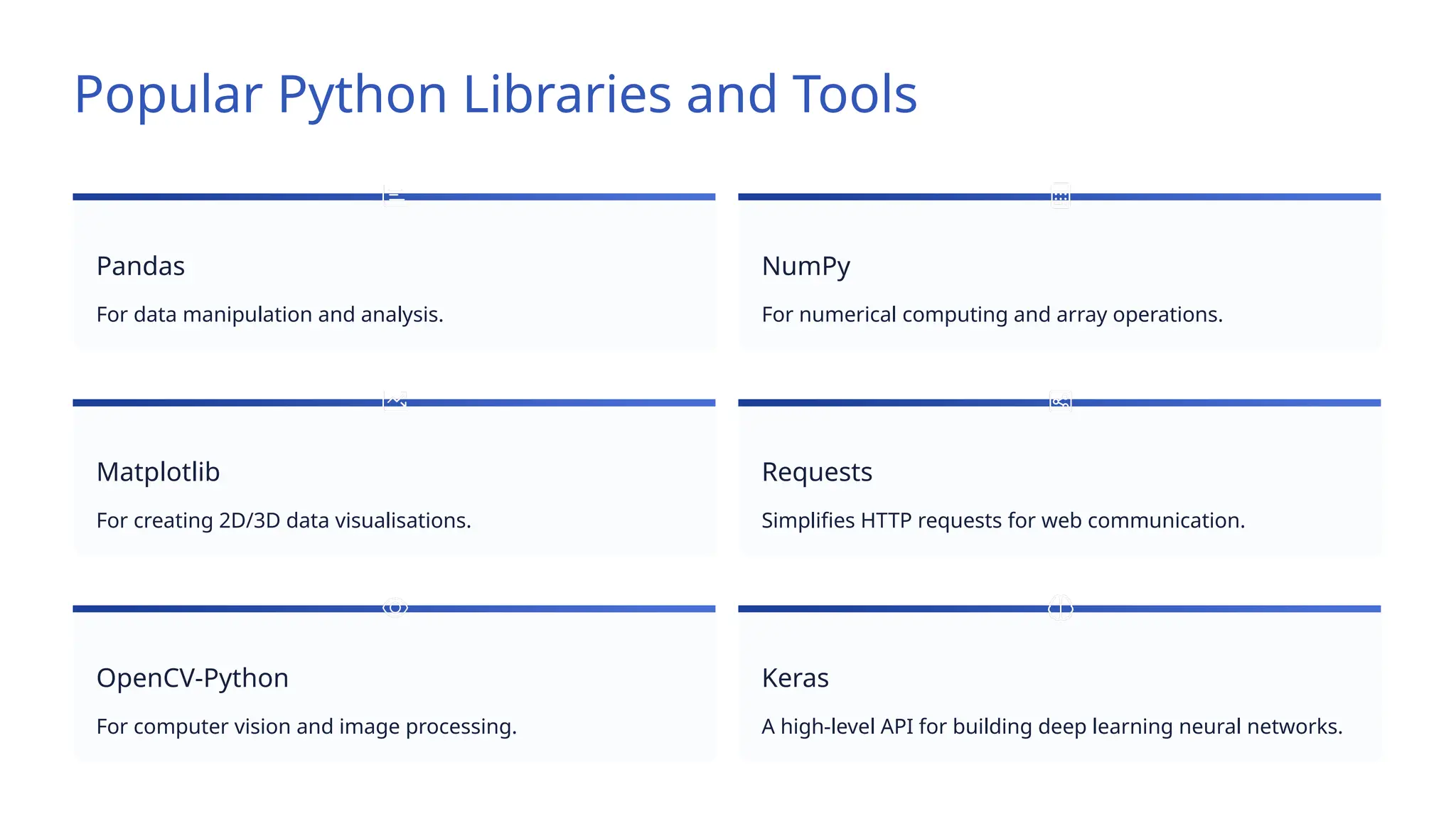This presentation offers a comprehensive overview of Python, a powerful and beginner-friendly programming language. It covers Python's history, key features, popular libraries, syntax basics, and its wide range of applications from web development to AI.








